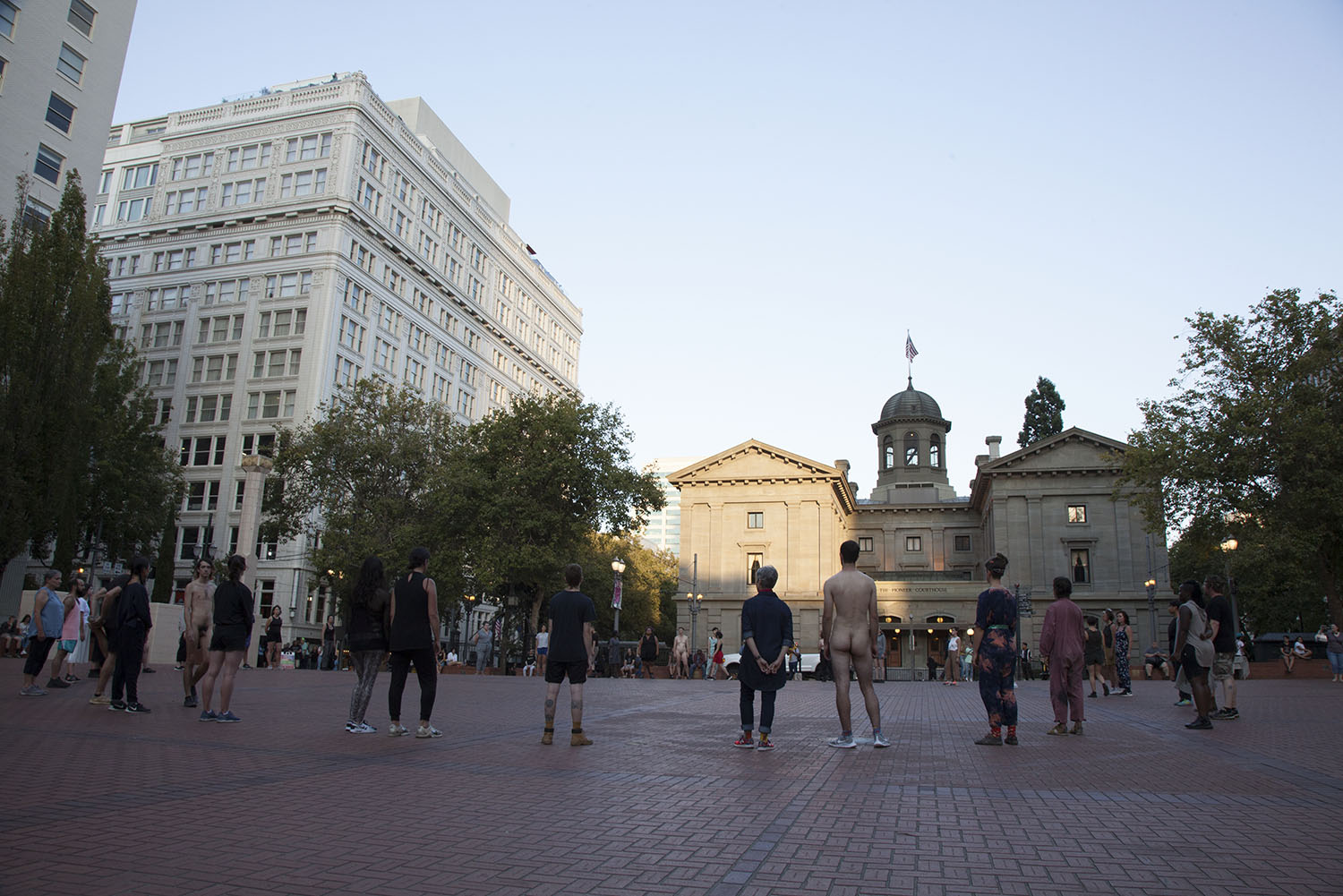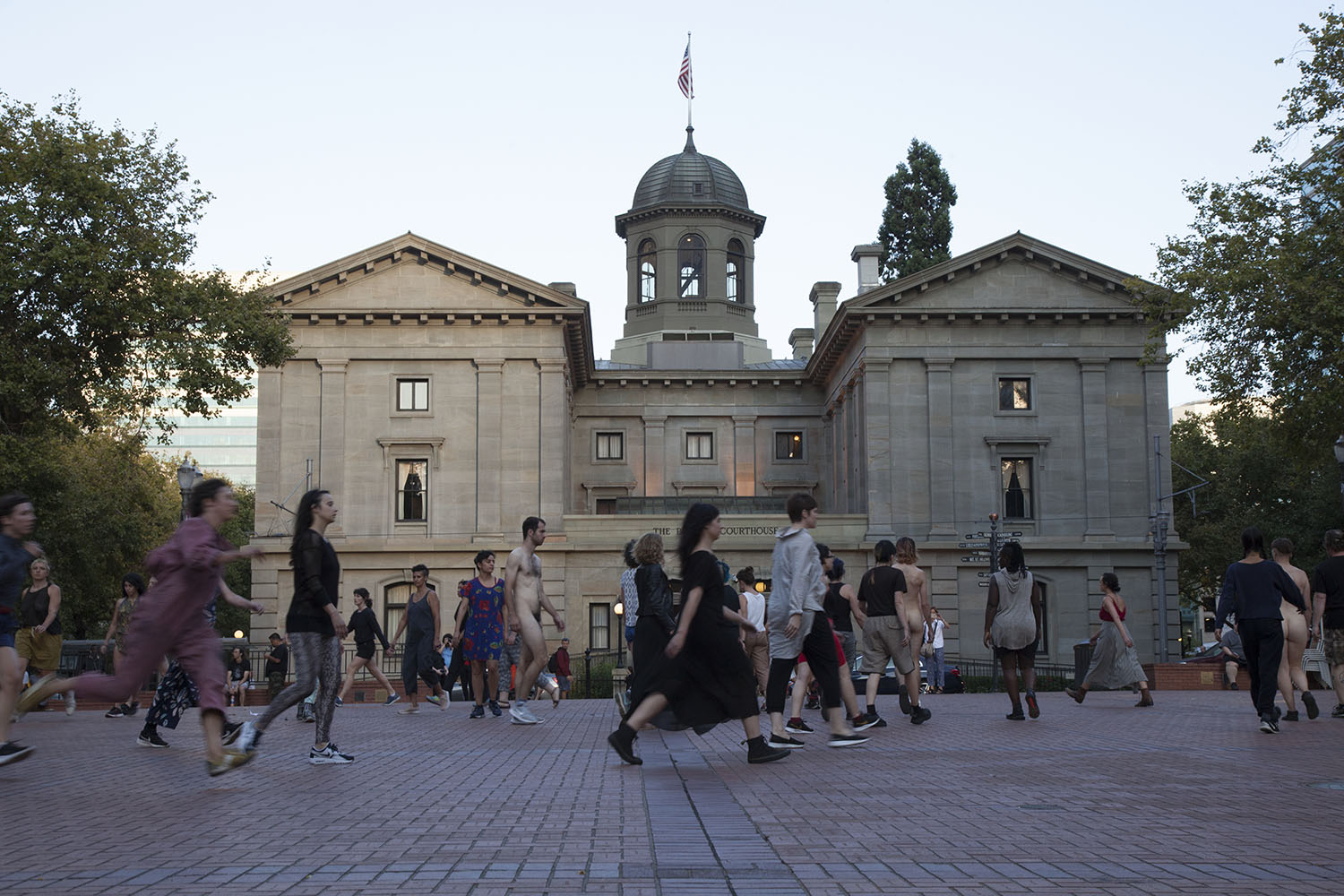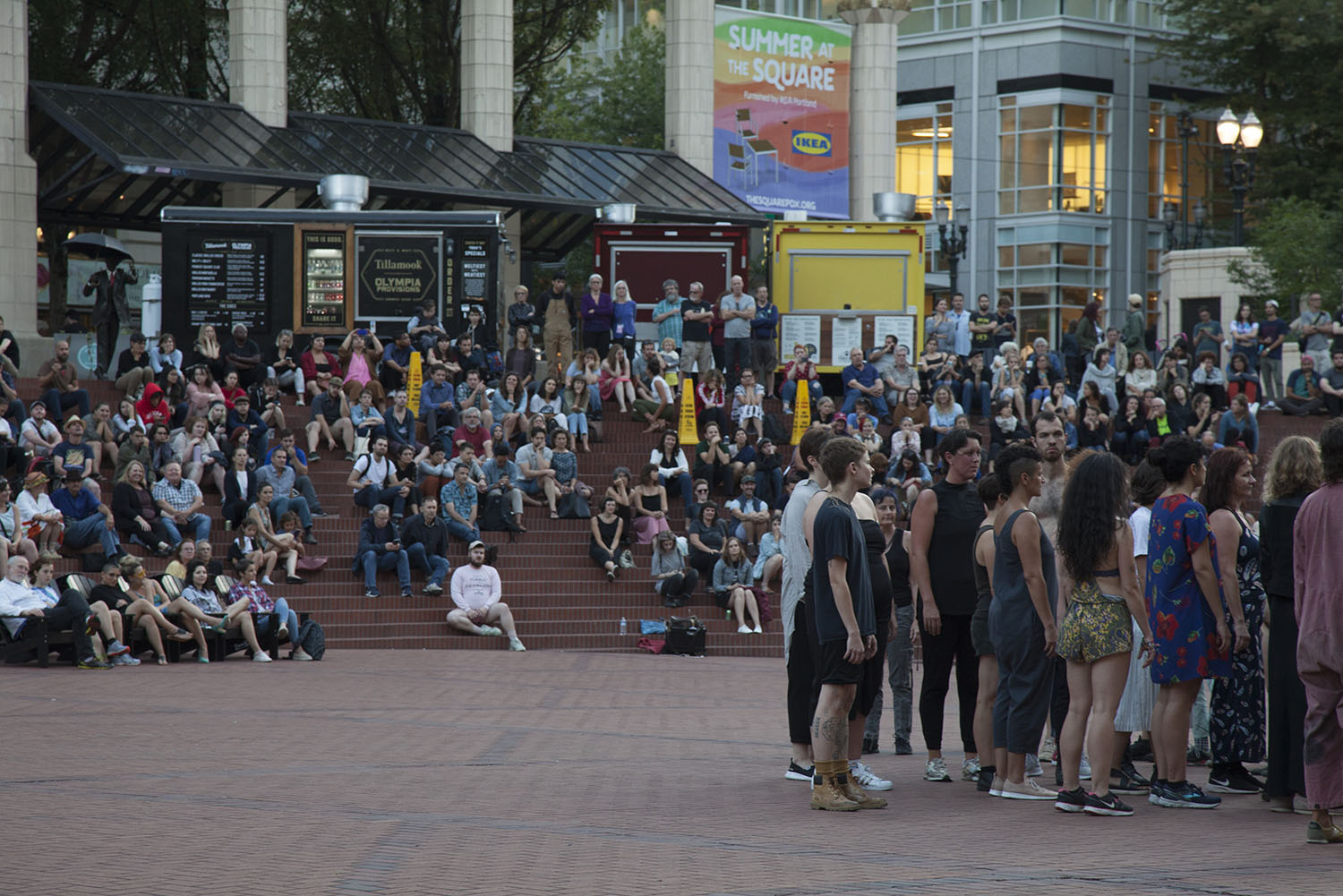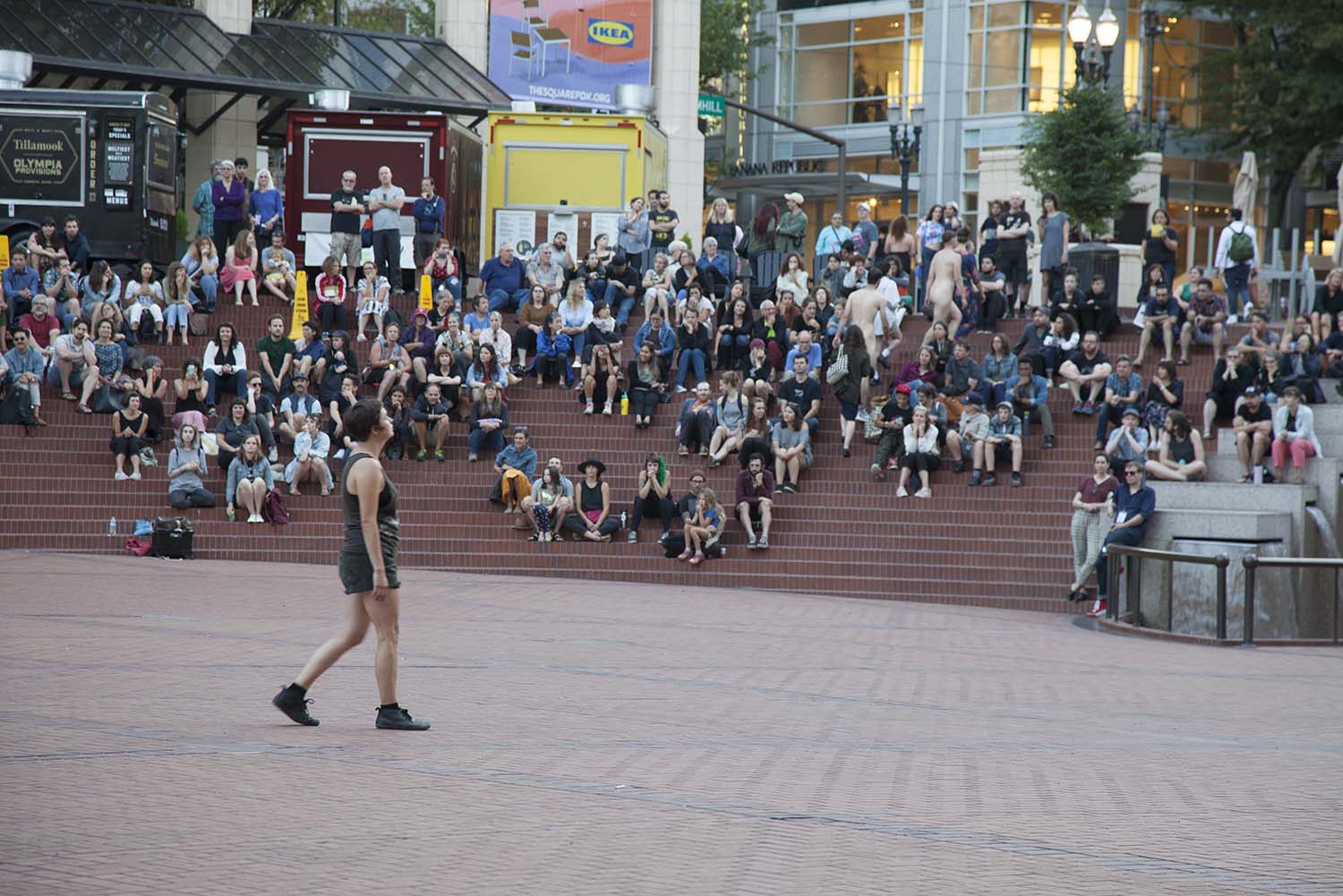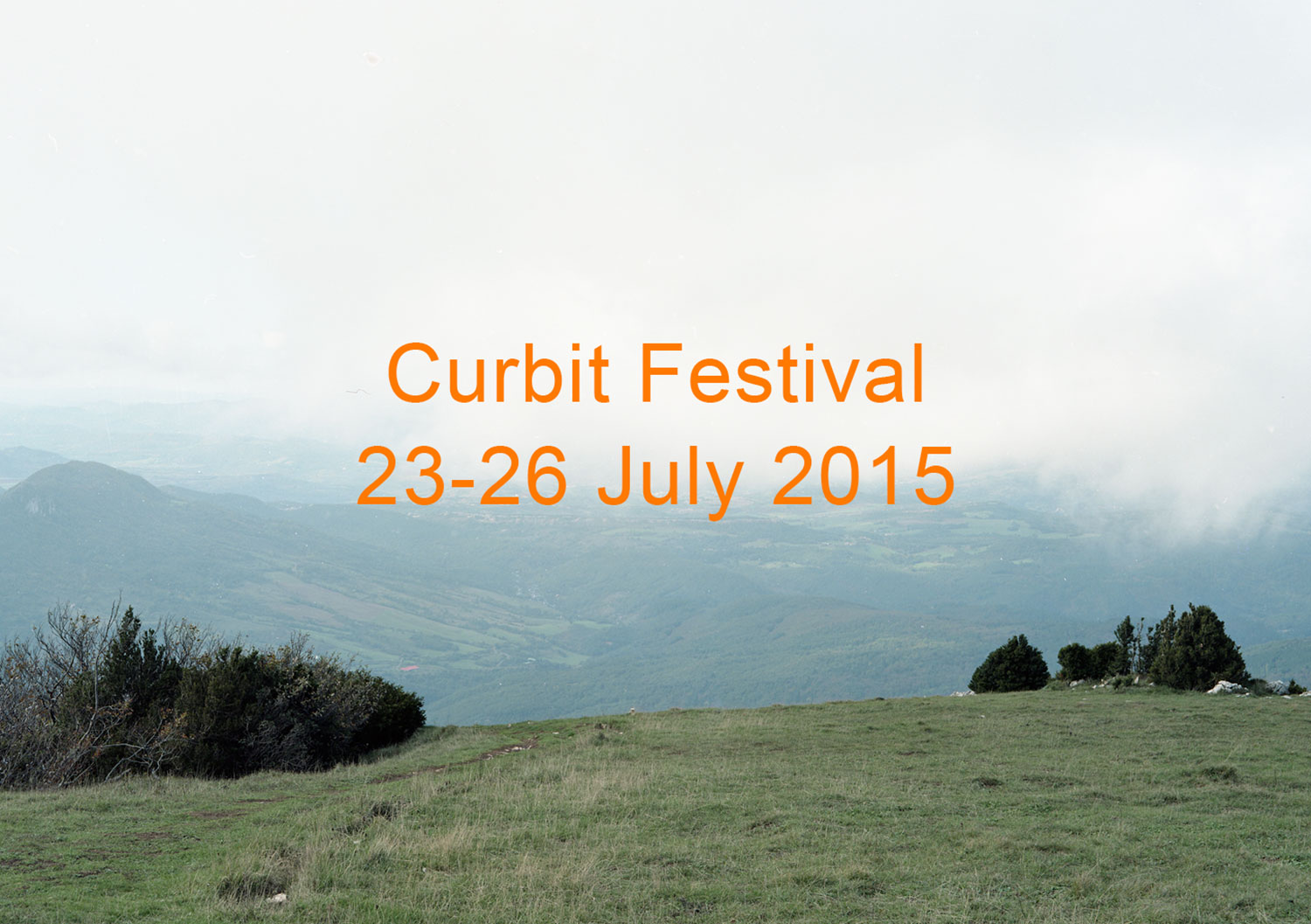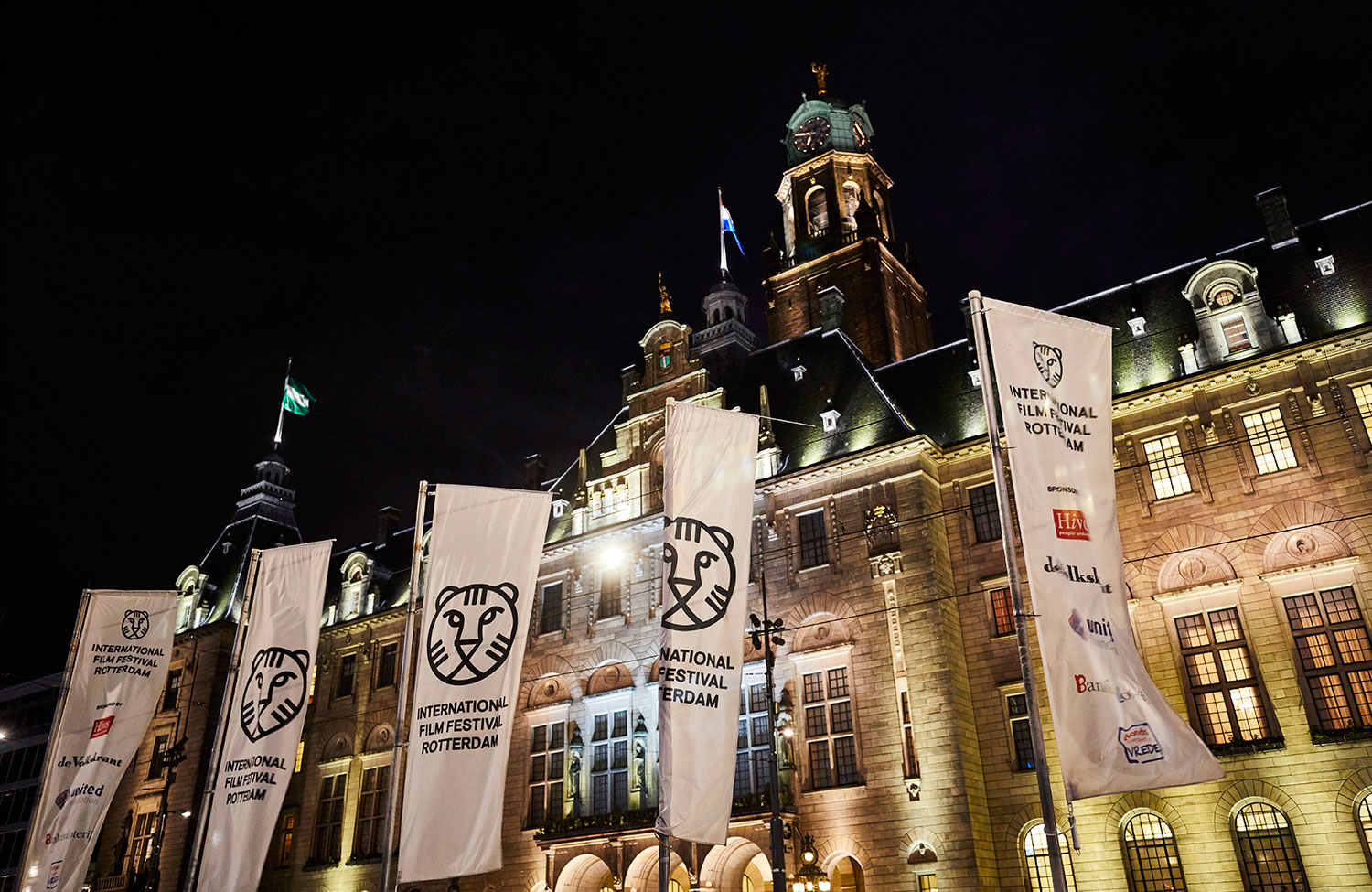A swarm of people gathers in Pioneer Square, the amphitheater-shaped plaza that is Portland’s downtown hub. These thirty or forty individuals start walking on the spot, winding in and out of each other, like the warp and weft of a fabric in the making. Surveying this group of varying ages, ethnicities, and genders offers no clue as to what is materializing. It might be a flash mob in preparation for a more elaborate dance or a protest in formation, and it is this potent space of human possibility that Oslo-based choreographer Mia Habib’s ALL – a physical poem of protest insists on holding open.
Someone starts to run. One by one, other performers join in, until the running spreads from the outside of the swarm through to its core, imparting a sense of collective urgency. As this speed fades and the swarm’s walking pace returns, a single person remains running solo, as if holding a lighted torch. For the next hour and a half, individual and collective gestures will repeatedly dissolve into each other, forming an ecosystem of understated and organic motion. It is poignant to witness this unspectacular moving collective, whose vulnerability as a phenomenon in public space is brought home by the presence of a few completely naked performers. The threat of violence that accompanies this gesture is quietly palpable, even in the legitimated context of the annual Time-Based Art Festival, creating the occasion for this performance.1
Two homeless men argue about what they are watching. “It’s a protest,” insists one of them. “For what?” asks the other. “Can’t you see? It’s for freedom,” the former insists. To prove his point, he joins the moving swarm, holding his paper cup as he runs. As the performers stretch out a hand to rest on their peers’ shoulders, the homeless man becomes part of a moving trio. The success of this “epic, durational, community performance” is brought home by the spontaneous participation of several bystanders, including a woman with a dog on a leash that runs as if his life depends on it.2 The scene is not without comedy or tragedy; it is as rich in human texture as a Shakespearean plot.
The following day, Habib’s performance takes place at the Portland Institute of Contemporary Art. In this second iteration, the performers file into the warehouse space naked; their bodies retrace each other’s movements in almost total silence. Their collective presence is a powerful evocation of “bare life,” haunted by the current slippage of human life into a “zone of indistinction” facilitated by right-leaning thinking.3 At recurring moments, this forty-strong crowd stands as an unmoving human circle. Ten or more minutes of quiet intensity pass. During more than two hours of observing, one slowly gets to know the bodies of each performer, almost intimately but not voyeuristically. Rather, this process of coming-to-know evokes empathy: for the surgeries that have left their marks, the uneven distribution of body weight, for the necessarily fluid spectrum of gender, the endless variations of skin tones, for the personal narratives embedded in tattoos. The performance is ritualistic and collaborative, suspending trust between every performer and each member of the audience. It is entirely undogmatic in its approach, acting like a mindfulness exercise that plunges us into the fragile reality of humanity. Almost two hours into the performance, I find myself deeply moved, even welling up with emotion. This depth of impact seems to come from the unspoken feeling of solidarity; the way this collective work pushes back silently against a world that is “ripening for fascism.”4 I am left with a sense of gratitude for having been entrusted with something unnamable and precious.

